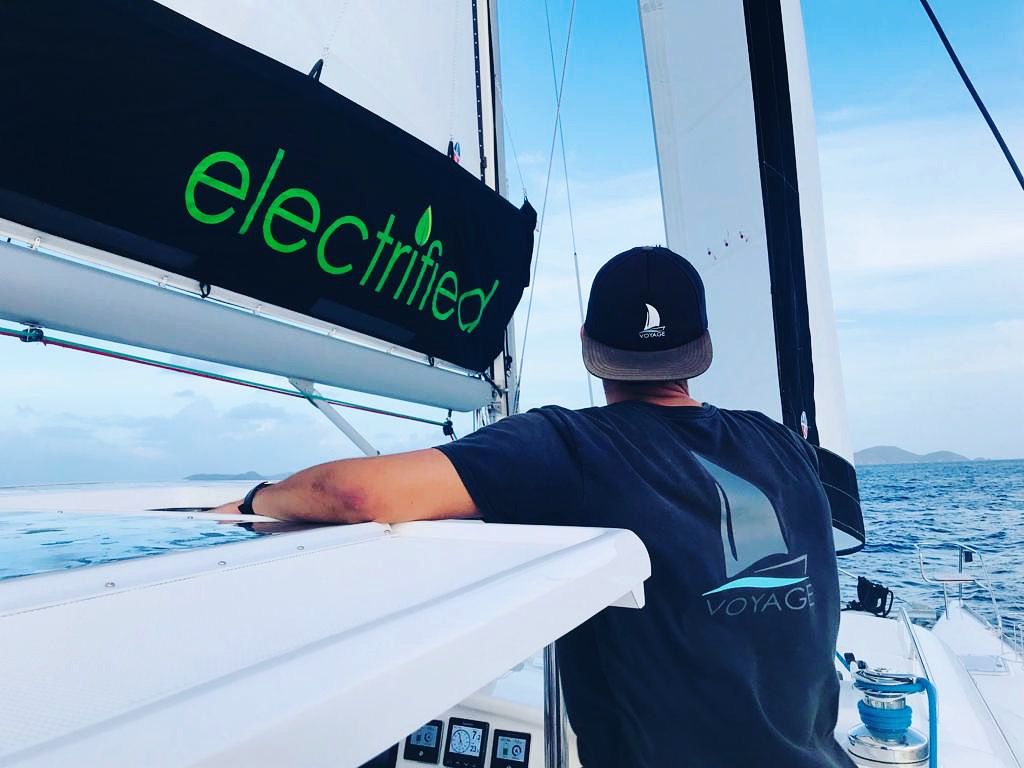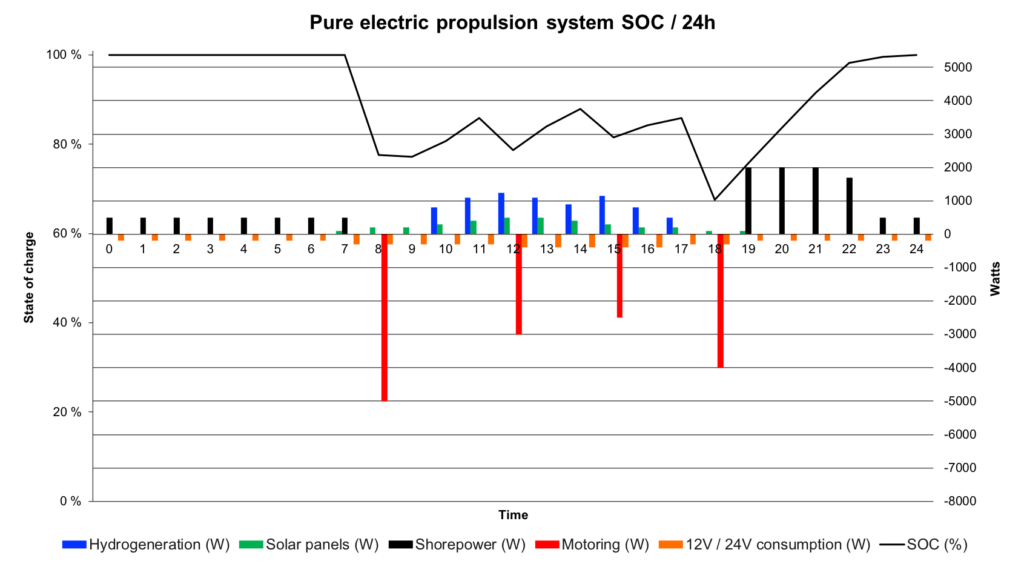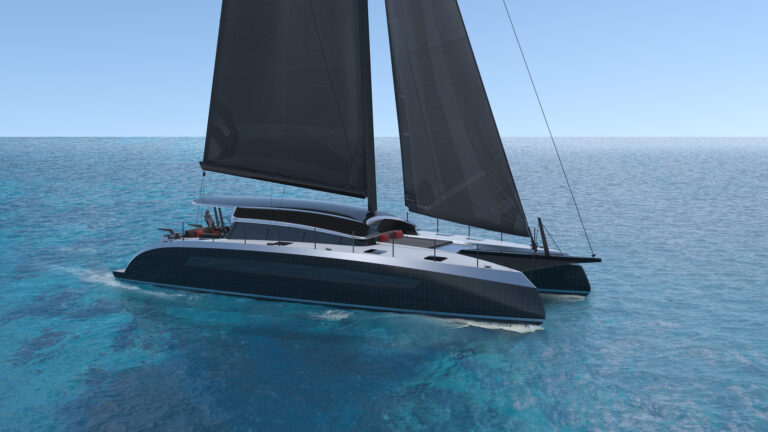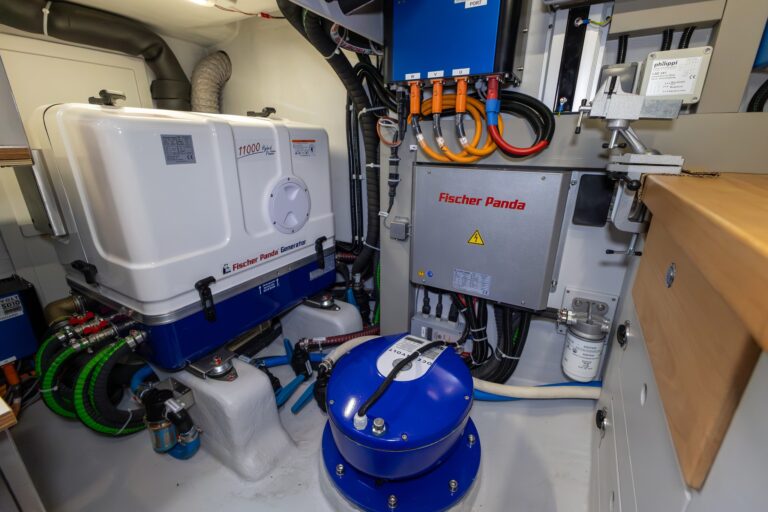
Value of electric propulsion for sailboats: Complete power management
A properly designed and installed high Reserve Capacity (RC) battery bank, when combined with a complete power management system and an electric auxiliary propulsion system, gives many new functions and increases the usability of all vessel systems. The user can have a complete picture of the vessel’s power use, generation and remaining RC especially when all input and outputs are integrated into the vessel’s power management system. This information and control creates a far superior user experience because comfort and liveability of any sized vessel is dramatically increased. A sailboat can be operated in a self-sustaining manner on many levels of comfort and performance depending on design.

Ultimately, the electric propulsion system’s advantages can be realised with all these new possibilities in mind. Rethinking the budget traditionally allocated towards auxiliary propulsion is the only barrier to having a fully self-sustaining sailboat.
Hybrid systems with electric propulsion and a VDC Generator (48vdc output) meet the needs of every cruiser for both auxiliary propulsion, house and service loads. This hybrid configuration has many advantages over the traditional propulsion engine and VAC generator (110 – 220vac output). The large battery bank covers the gaps between time of generation/charging and when the needs for propulsion and house loads arise. This allows the generator to be operated at the best time for comfort as opposed to real-time to meet needs. The end user experience is greatly increased with more control and being able to use whatever power draws, whenever they wish. This hybrid system allows for the traditional ability of adding fuel to extend range and can cover house and service loads not met by solar or other sources.
Additionally, the generator’s engine can run in its most efficient power band, unlike a typical marine propulsion engine. The DC generator is concerned only with charging the battery system in order to maintain State Of Charge (SOC). It can run with optimal speed where the power generation is most efficient. The fuel consumption is thus significantly lowered and not affected by motor power consumption.
Continue reading the seventh part of this white-paper: Value of electric propulsion for sailboats: Remote service and system updates.


